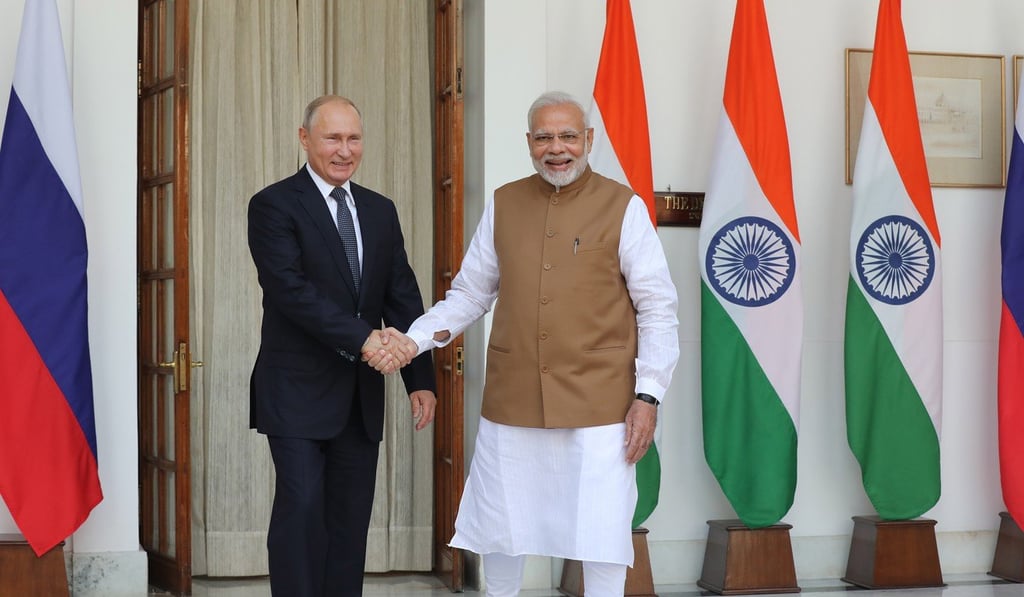India and Russia may be partners, but can they find common ground on China?
Putin’s visit to India saw the low-key conclusion of a US$5.4 billion arms deal to appease the US – but as Beijing increases its regional influence, questions loom over the future direction of relations between New Delhi and Moscow

The summit meeting last week between Indian Prime Minister Narendra Modi and Russian President Vladimir Putin was an effort by New Delhi to allay Moscow’s growing apprehension that its long-standing strategic partner and largest arms buyer has been lost forever to the United States.
In concluding a US$5.43 billion deal for five regiments of Russia’s S-400 Triumf long-range air defence system, New Delhi signalled that, notwithstanding the growing US-India strategic and military partnership, India’s strategic balance and its dependence on Russian submarine and missile technologies requires it to continue buying arms from Moscow.
To lessen the impact in Washington, the announcement of the S-400 purchase was done in a conspicuously low-key manner. Both Modi and Putin avoided any mention of the deal in their press engagements. Nor did the S-400 contract feature in an official list of agreements signed. Instead, this significant acquisition was announced through a single brief sentence buried in the 45th paragraph of an official joint statement: “The sides [New Delhi and Moscow] welcomed the conclusion of the contract for the supply of the S-400 long-range surface-to-air missile system to India.”
Even so, the S-400 buy renders India vulnerable to US sanctions under legislation passed in mid-2017. The “Countering America’s Adversaries Through Sanctions Act” (CAATSA) binds Washington to sanction countries that enter into “significant transactions” with specified Russian, Iranian and North Korean defence and intelligence entities, including Almaz-Antey Corporation, which manufactures the S-400. The US president can waive CAATSA sanctions at his discretion but, on Thursday, President Donald Trump appeared to taunt New Delhi, telling reporters that “India is going to find out … sooner than you think” whether sanctions were coming.

Meanwhile, placing India in the position of a small bone between two very large dogs, Russia’s envoy to New Delhi, Nikolay Kudashev, declared on Thursday: “CAATSA will not be a pressure [point] between India and Russia defence deals … We hope in the next two-three months, without any interference in the negotiation process, we could close the deals on frigates as well as Kalashnikov assault rifles. There could be other deals also. Just give the military some time.”
Kudashev was referring to other Indian contracts in the pipeline with Russia. These include a US$2 billion buy of four Krivak III-class frigates, a US$1.5 billion deal to build 200 Kamov-226T light helicopters in India and a billion-dollar contract for some half a million AK-103 rifles for the Indian Army. All of these risk sanctions under CAATSA.